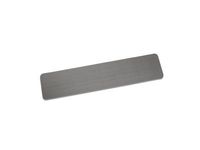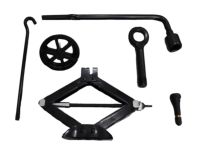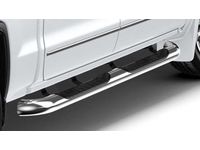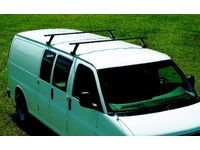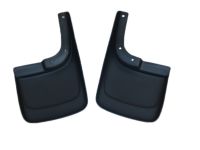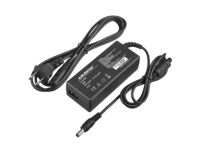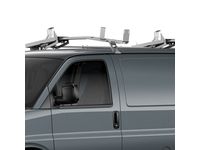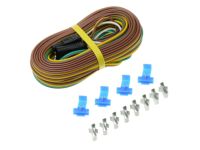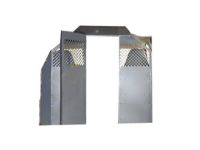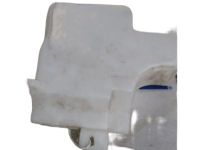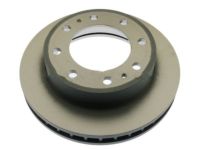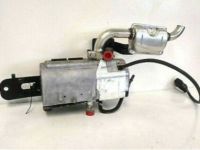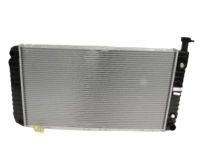
Why choose GMPartsGiant
- Large Inventory
The best site to buy GMC Savana genuine parts for years has been GMPartsGiant.com. We're the best online parts and accessory store for your GMC Savana. GMPartsGiant.com offers a large parts and accessory inventory to cover all your vehicle's repairs. Feel free to browse through our genuine GMC Savana parts and accessory catalog to find all your vehicle's needs.
- Fast Shipping Times
All of our GMC Savana auto parts and accessories are expedited directly from verified dealers and backed by the manufacturer's warranty. Our experienced team ensures the orders are packed to provide quick transit times. The majority of the orders are shipped out within a couple of business days to get the parts out to you as fast as possible.
- Low Prices
Our low prices say it all. You can rest assured that you will always receive unbeatable prices on OEM GMC Savana parts. Our giant inventory is beyond compare and has everything you need at an extraordinary value not found anywhere else. Whether you're restoring an old vehicle or upgrading the performance of your vehicle you can count on the quality of our products without hurting your bank account.
Popular Genuine GMC Savana Parts
- Engine Parts View More >
- Fuel System, Exhaust, Emission System Parts View More >
- Brakes Parts View More >
- Transmission - Automatic Parts View More >
- Frames, Springs, Shocks, Bumpers Parts View More >
- Cooling System, Grille, Oil System Parts View More >
- Front Axle, Front Suspension, Steering Parts View More >
- Front End Sheet Metal, Heater Parts View More >
Shop Genuine GMC Savana Parts with GMPartsGiant.com
The GMC Savana was a full-size van that was manufactured by General Motors in 1996 to take the place of the GMC Vandura. In 2003, GMC Savana was updated and equipped with an LS engine. When the last generation was released, it was powered by a V8 engine ranging from 4.8 L to 6.0 L. Also, a 6.6 L turbo diesel V8 engine is optional.
The GMC Savana, a versatile vehicle, is unfortunately not without its set of challenges, with three primary issues being radiator leaks, rotor deformations, and transmission problems. Starting with the cooling system, this intricate assembly, consisting of the thermostat, radiator, and other vital parts, is susceptible to radiator leaks. Such leaks manifest as coolant puddles, engine overheating, squeals from the coolant's interaction with the serpentine belt, and white smoke as the coolant meets hot engine parts. These issues can arise from external damages like road debris, internal issues such as sediment-induced corrosion, a malfunctioning thermostat, using incompatible coolants, or a leaking radiator cap. Radiator fluid, identifiable by its sweet aroma and diverse colors, helps optimize engine performance by modifying water's temperature thresholds. It's crucial to routinely monitor fluid levels and engine temperatures to ensure optimal function. Temporary solutions, like stop leak products, might provide immediate relief but pose risks like clogging. Direct leaks, especially from hoses or clamps, necessitate immediate professional intervention. The ideal solution involves a thorough check by a seasoned technician, who might recommend welding procedures or part replacements. For preventive care, regular radiator flushes every 30,000 miles or within 3-5 years are advisable. Next, the Savana's brake rotors, positioned behind the wheels, can wear down or warp due to the intense friction from braking. This warping can manifest as vibrations during braking, visible blue spots from overheating, diminished rotor thickness, and irregular rotor surfaces. These rotor problems can arise from consistent hard braking, improper wheel installation, defective wheel bearings, or even general wear and tear. With several designs available, rotors require replacements usually between 15,000 to 70,000 miles, based on usage and type. Prolonged parking might lead to rotor rusting, compounding problems. Ensuring correct brake installation, precise lug nut fastening, and judicious braking can prevent these issues. While DIY enthusiasts might consider self-replacements, professional expertise is often the safer route. Lastly, the Savana's transmission system has been a concern across various models. Issues span from engine compartments catching fire due to overheating, as seen in the 1997 and 2008 models, to the 2003 model suffering from transmission failures that hindered highway speeds. Various internal damages like sunshell stripping and clutch damages were identified as culprits. Models from 1999 exhibited spontaneous downshifting and brake failures, while the 1997 version had missing adjustment springs affecting brakes and early transmission failures. The 1996 model experienced valve issues, brake problems, and a malfunctioning speedometer leading to internal drive gear breakdowns. Cumulatively, these reports underscore the pressing need for vigilance and timely interventions for GMC Savana owners.
Choosing OEM parts is the best decision for guaranteeing superior quality and perfect performance. These components undergo stringent quality checks and are carefully constructed to comply with GMC's factory specifications, ensuring a smooth installation process. Looking for top-quality but affordable OEM GMC Savana parts, like Rear Body Structure, Moldings & Trim, Cargo Stowage, Transfer Case? Consider browsing the extensive inventory of genuine GMC Savana parts, such as Transmission at GMPartsGiant.com. Our parts are priced the most affordably online and come with the assurance of a manufacturer's warranty. Plus, our hassle-free return policy and speedy delivery service make your shopping experience a breeze. Why wait? Start shopping today!
GMC Savana Parts Questions & Answers
- Q: How to remove the reservoir on Chevrolet Express and GMC Savana?A: To remove the reservoir, detach the overflow hose from the radiator filler neck. Next, remove the mounting bolt in front and lift the reservoir forward to clear the tabs in the rear. Remove the reservoir from the engine compartment and drain the coolant. Clean the reservoir with soapy water and a brush if necessary, then rinse thoroughly. The installation is the reverse of the removal.
- Q: How to Inspect and Refinish Brake Disc for Chevrolet Express and GMC Savana?A: Initially, before inspecting the brakes, loosen the wheel lug nuts and raise your vehicle on jackstands. Also, don't forget to engage the parking brake before removing the wheels. While looking at its disc surface, check for any score marks or damages. Light scratches and slender grooves are general and don't interfere with brake performance; nonetheless, deep grooves need a disc that will be taken out and refinished by a machine shop. Check both sides of the disc. To verify if there is any warping in the disc, position a dial indicator about half an inch from outside edge of the disc and zero it out. Rotate the disc while ensuring that its runout limit specifications are not exceeded in reading by this instrument. If so happen it must be refinished (the disc). Refinishing disks is highly recommended when replacing brake pads to achieve smooth finish thereby ending any pulsation on braking pedal whatsoever. In case they are not resurfaced use emery cloth or sandpaper to take off glaze from their face up side or down side as well . In order to ascertain this one can measure its thickness using micrometer so as to see whether its not less than minimum thickness written on it For removals purposes only remove calipers leaving hoses intact just hang them somewhere aside On new models take away also caliper mounting bracket In case of front discs remove grease cap , wheel bearing retainer nut spindle nut outer bearing retainer washer and outer wheel bearing respectively before taking of the disc/hub For rear discs just pull them off from wheel studs only This is done contrary to removing it where you have got to put back caliper mounting bracket as well as tighten back wheel lug onto appropriate torque for it As we lower down our vehicle in inspection place all things secure.
- Q: How to remove the Heater Core?A: To remove the front heater core, start by disconnecting the cable from the negative battery terminal and draining the cooling system. Then, remove the coolant reservoir and disconnect the heater hoses at the heater core inlet and outlet pipes on the engine side of the firewall. Unscrew the heater core cover and carefully cut along the top edge to remove it. Finally, remove the heater core retainers and detach the heater core from the housing. For the rear heater core, begin by having the air conditioning system discharged. Remove the left rear quarter trim panel and the upright air duct from the housing. Disconnect the electrical connectors to the HVAC housing and remove the cover to the housing assembly plumbing from under the vehicle. Remove the heater and air conditioning hoses and the mounting nuts to the housing assembly. To install both heater cores, simply reverse the removal steps. Refill the cooling system, check for proper operation, and recheck the coolant level.
- Q: How to remove and install the radiator on Chevrolet Express and GMC Savana?A: To remove the radiator, drain the cooling system and remove the air cleaner assembly, intake duct, and coolant reservoir. Next, disconnect the upper radiator hose, heater outlet hose (if equipped), vent pipe hose (if equipped), and lower radiator hose from the radiator. Carefully disconnect the transmission cooler lines and engine oil cooler lines (if applicable) from the radiator. On 2018 and later models, remove the grille and left headlight housing, then disconnect the air conditioning refrigerant line from the condenser and plug and cap the fittings. The installation process is the reverse of removal, ensuring that the radiator is properly seated in the lower rubber mounts and the cooler lines are securely connected with the retaining clips and plastic collars. After installation, refill the cooling system and check the engine oil and automatic transmission fluid levels.


















































